miragem - kinematic arts in the landscape 2021
With regard to an explanation on the urgency in filming Pond and Waterfall, Barbara Hammer affirmed that her interest in filming the water in such a beautiful way was motivated by the idea of which perhaps, perhaps, if the beauty of the water was shown to us, we would want to take better care of it. And it is precisely from the evocation of the waters that our programme of 2021 for Miragem - kinematic arts in the landscape starts.
The sea as the mythological element of enchantment and spell, the sea of labour, of fishing and extraction; of colonial violence, as much as inhabited by so many more-than-human species. It is surface as much as it is depth. From the beauty of the fluctuation of the waves, of the brilliances and of its inhabitants of perfect colors, to the convocation so that we think its history. This is an invitation to face, through cinema, the wide range of meanings that the aquatic millieu has had, on an island where life has always been determined by and with the sea.
Programme
26/08/21
2pm - 6pm | Mata dos Dragoeiros, Museu do Vinho
Workshop - How to Print the Landscape? - part 1 with Mónica Baptista
9.30pm | Baía do Pocinho
- Sound Of A Million Insects, Light Of A Thousand Stars, by Tomonari Nishikawa
- Turbulence, by Rose Lowder
- All That Perishes At The Edge Of Land, by Hira Nabi
- Una Luna de Hierro, by Francisco Rodriguez
27/08/2021
2pm - 6pm | Mata dos Dragoeiros, Museu do Vinho
Workshop - How to Print the Landscpe? - part 2 with Mónica Baptista
9pm | Baía das Canas
Talk with Margarida Mendes on deep sea minning and activism
10pm | Baía das Canas
screening curated by Margarida Mendes
- What Is Deep Sea Minning? Episode 1: Tools For Ocean Literacy, by Inhabitants with Margarida Mendes
- What Is Deep Sea Minning? Episode 2: Deep Frontiers, by Inhabitants with Margarida Mendes
- What Is Deep Sea Minning? Episode 3: The Azores Case, by
Inhabitants with Margarida Mendes
- Oceanarium, by Armin Linke in colaboration with Giulia Bruno and Giuseppe Ielasi
28/08/21
7pm | Gruta das Torres
- Look Then Below*, by Ben Rivers
filmmaker present to introduce the work + guided tour to the Cave
8pm | Gruta das Torres
- repetition of the screening* + tour
10pm | Café concerto
- party at Café Concerto
*screening in partnership with the Regional Secretary for Environment and
Climate Change through the Visitors’ Center of Grutas das Torres
29/08/21
9.30pm | Baía das Canas- Screening of the Colective Film result of the Workshop with Mónica Baptista;
- Of This Beguiling Membrane, by Charlotte Pryce
| - Moon’s Pool, by Gunvor Nelson |
- Água Forte, by Mónica Baptista
30/08/21
9.30pm | Baía do Pocinho
Two Years At Sea, by Ben Rivers
filmmaker present to introduce the work

Sound Of A Million Insects, Light Of A Thousand StarsTomonari Nishikawa, 2014
35mm colour negative film was buried under fallen leaves near the Fukushima Daiichi Nuclear Power Station. Visualising invisible radioactivity, the result is a frenzy of flickers of light and scratches. Nishikawa's abstract film may be his most political.
35mm colour negative film was buried under fallen leaves near the Fukushima Daiichi Nuclear Power Station. Visualising invisible radioactivity, the result is a frenzy of flickers of light and scratches. Nishikawa's abstract film may be his most political.

TurbulenceRose Lowder, 2015
Turbulence was filmed in the medieval town of Alet les Bains, in the Department of Aude. In the middle of the peaceful city, with a warm and relaxing climate, known for its thermal baths, one can see in the river Aude a small waterfall, the images of which as well as the title of the film refer to the present state of the world today.
Turbulence was filmed in the medieval town of Alet les Bains, in the Department of Aude. In the middle of the peaceful city, with a warm and relaxing climate, known for its thermal baths, one can see in the river Aude a small waterfall, the images of which as well as the title of the film refer to the present state of the world today.
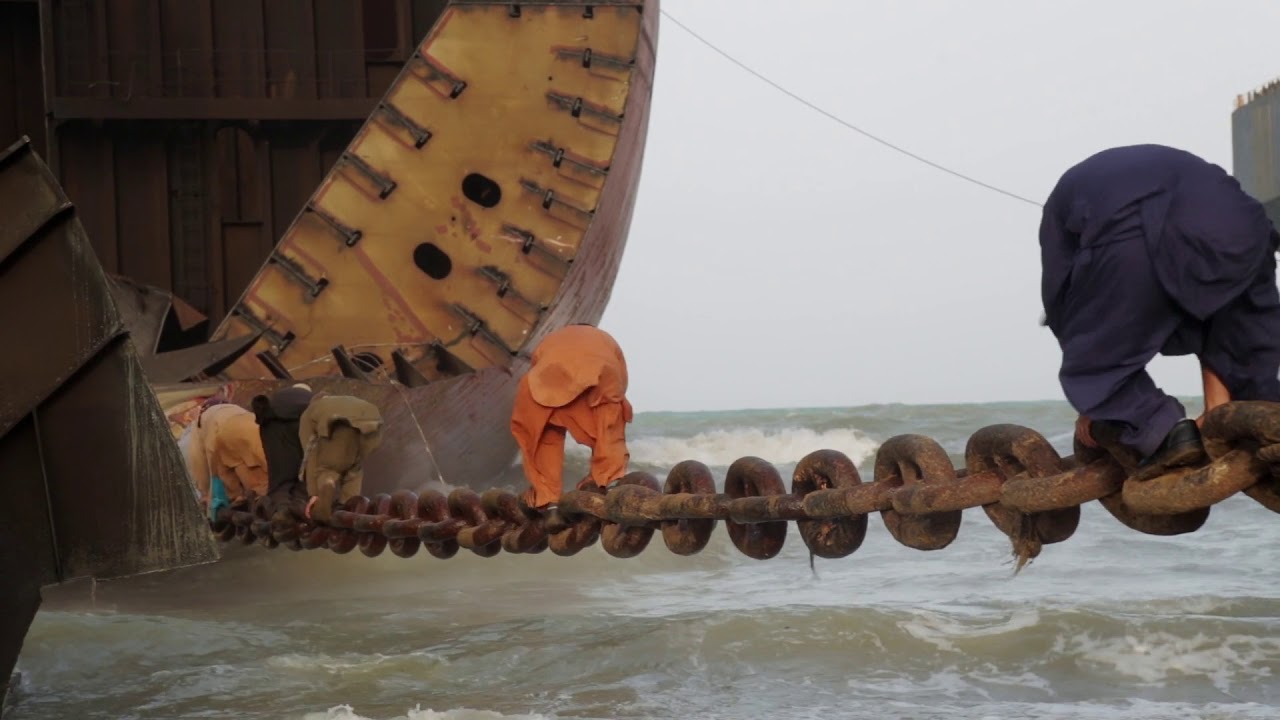
All That Perishes At The Edge Of LandHira Nabi, 2019
In this docu-fictional work, ‘Ocean Master’ a container vessel is anthropomorphized, and enters into a dialogue with several workers at the Gadani yards. The conversation moves between dreams and desire, places that can be called home, and the structural violence embedded in the act of dismembering a ship at Gadani. As the workers recall the homes and families they left behind, the long work days mesh indistinguishably into one another, they are forced to confront the realities of their work in which they are faced with death every day, and how they may survive and look towards the future.
In this docu-fictional work, ‘Ocean Master’ a container vessel is anthropomorphized, and enters into a dialogue with several workers at the Gadani yards. The conversation moves between dreams and desire, places that can be called home, and the structural violence embedded in the act of dismembering a ship at Gadani. As the workers recall the homes and families they left behind, the long work days mesh indistinguishably into one another, they are forced to confront the realities of their work in which they are faced with death every day, and how they may survive and look towards the future.
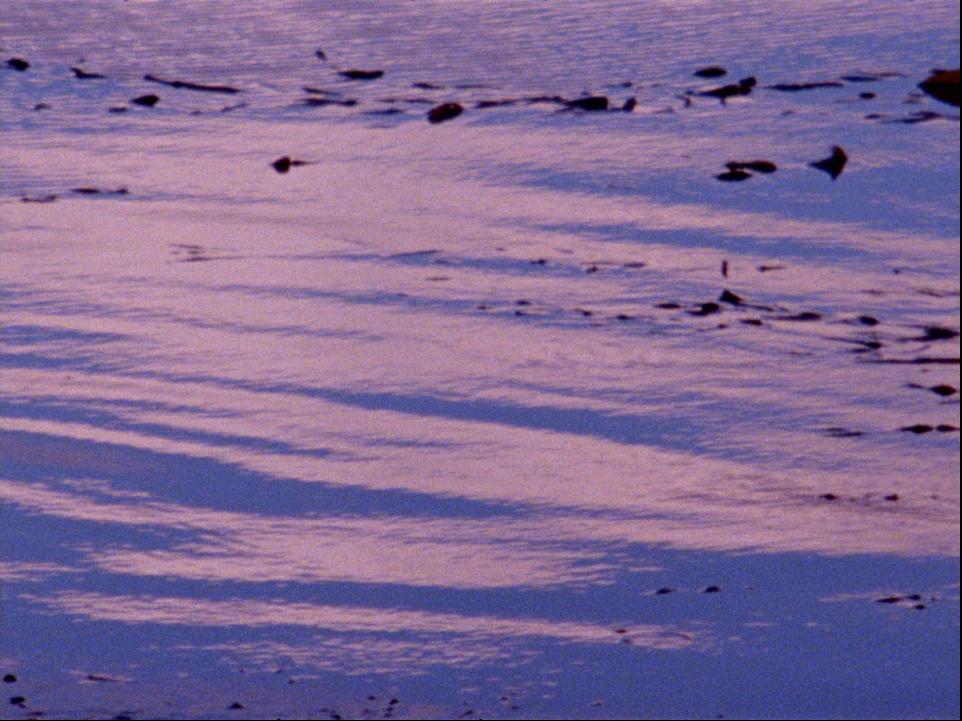
Una Luna de HierroFrancisco Rodriguez, 2017
A Moon Made of Iron opens with the poetry of Xu Lizhi, a worker at the Foxconn electronics factory in Shenzhen, China, who committed suicide in 2014 at the age of 24. It then cuts across the globe to the waters of Patagonia. The sea appears placid, but it is in fact a sea of desperation, horrendous working conditions, and bodies overboard in liquid graves. Moving between the local and the global, the shore and the deep, Francisco Rodriguez inhabits the rippling wake of dead Chinese workers who attempted to flee their squid-fishing boat off the Chilean coast, far from the first for whom a long maritime voyage was one of no return.
A Moon Made of Iron opens with the poetry of Xu Lizhi, a worker at the Foxconn electronics factory in Shenzhen, China, who committed suicide in 2014 at the age of 24. It then cuts across the globe to the waters of Patagonia. The sea appears placid, but it is in fact a sea of desperation, horrendous working conditions, and bodies overboard in liquid graves. Moving between the local and the global, the shore and the deep, Francisco Rodriguez inhabits the rippling wake of dead Chinese workers who attempted to flee their squid-fishing boat off the Chilean coast, far from the first for whom a long maritime voyage was one of no return.
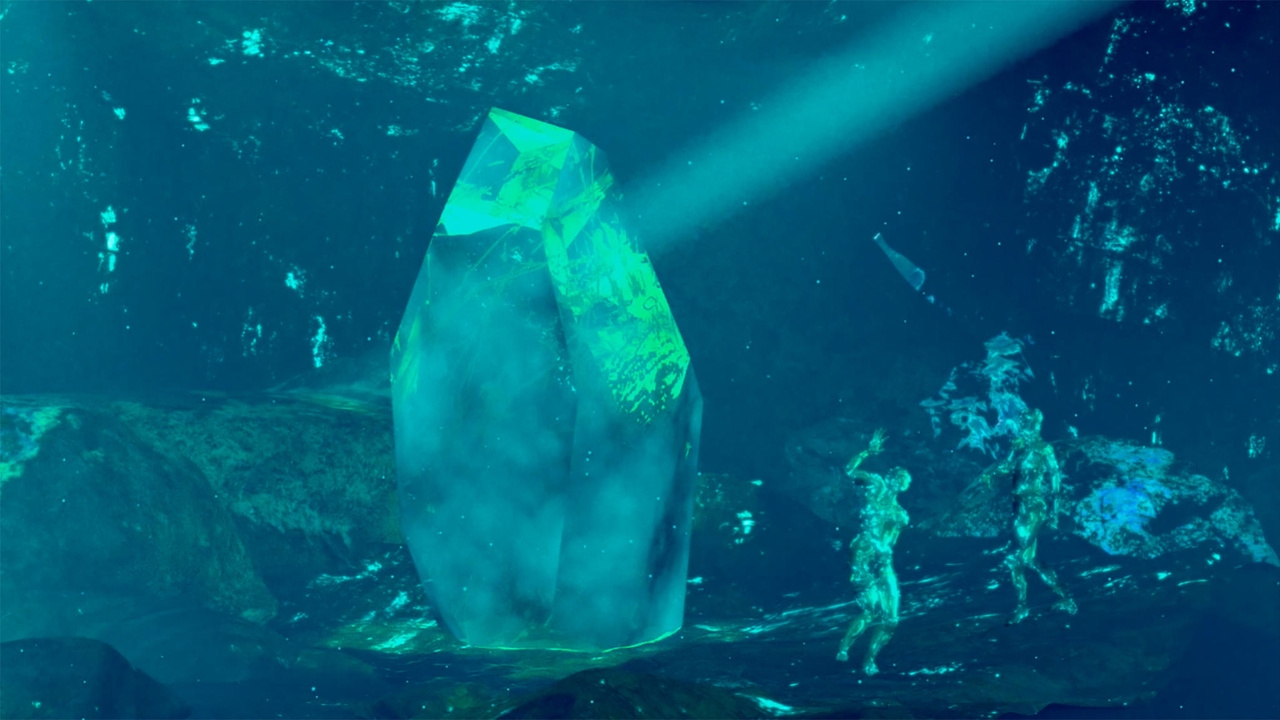
Look Then BelowBen Rivers, 2019
- filmmaker present
35mm colour negative film was buried under fallen leaves near the Fukushima Daiichi Nuclear Power Station. Visualising invisible radioactivity, the result is a frenzy of flickers of light and scratches. Nishikawa's abstract film may be his most political.
- filmmaker present
35mm colour negative film was buried under fallen leaves near the Fukushima Daiichi Nuclear Power Station. Visualising invisible radioactivity, the result is a frenzy of flickers of light and scratches. Nishikawa's abstract film may be his most political.
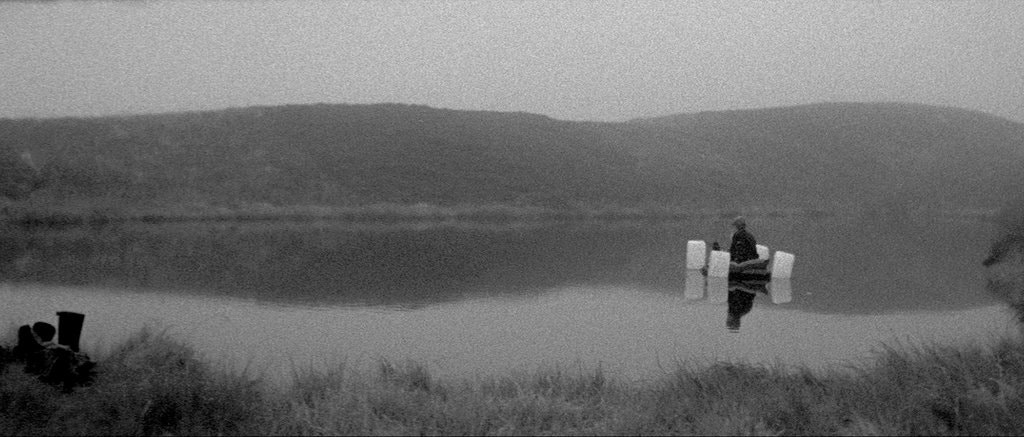
Two Years At SeaBen Rivers, 2011
- filmmaker present
A man called Jake lives in the middle of the forest. He goes for walks in whatever the weather, and takes naps in the misty fields and woods. He builds a raft to spend time sitting in a loch. Drives a beat-up jeep to pick up wood supplies. He is seen in all seasons, surviving frugally, passing the time with strange projects, living the radical dream he had as a younger man, a dream he spent two years working at sea to realise. Winner of the FIPRESCI Prize (Critics’ Week and Horizons sections), Venice Film Festival 2011.
- filmmaker present
A man called Jake lives in the middle of the forest. He goes for walks in whatever the weather, and takes naps in the misty fields and woods. He builds a raft to spend time sitting in a loch. Drives a beat-up jeep to pick up wood supplies. He is seen in all seasons, surviving frugally, passing the time with strange projects, living the radical dream he had as a younger man, a dream he spent two years working at sea to realise. Winner of the FIPRESCI Prize (Critics’ Week and Horizons sections), Venice Film Festival 2011.

Of This Beguilling MembraneCharlotte Pryce, 2021
The story unfolds on the Eve of Midsummer: on the day when the threshold between worlds is porous, and an idle gesture can tempt fate. Inspired by Robert Kirk's The Secret Commonwealth (1671), this work takes the outward form of a nature film. But observation gives way to illusion and the surface gives way to murky waters strewn with debris of those who have succumbed to its lures (the Lady of Shalott, Ophelia). They remain trapped; menacing reminders of the dangerous seduction of beauty, and anger of the elusive spirits who resent being examined.
The story unfolds on the Eve of Midsummer: on the day when the threshold between worlds is porous, and an idle gesture can tempt fate. Inspired by Robert Kirk's The Secret Commonwealth (1671), this work takes the outward form of a nature film. But observation gives way to illusion and the surface gives way to murky waters strewn with debris of those who have succumbed to its lures (the Lady of Shalott, Ophelia). They remain trapped; menacing reminders of the dangerous seduction of beauty, and anger of the elusive spirits who resent being examined.
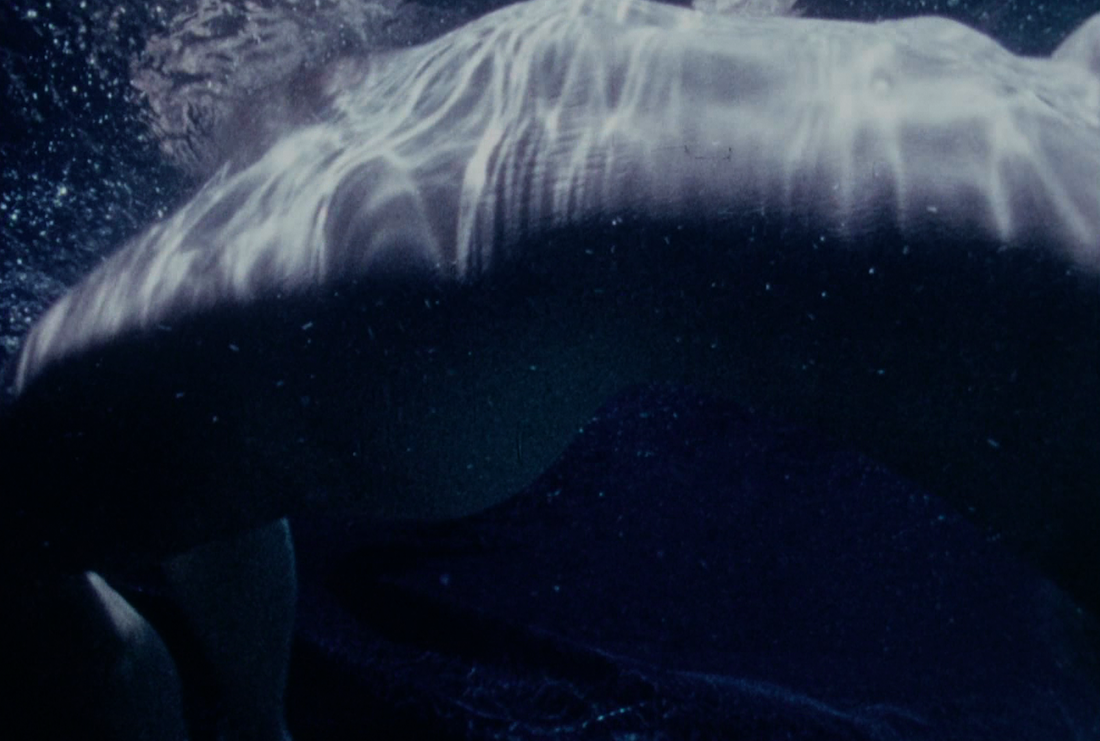
Moon’s PoolGunvor Nelson, 1973
Moon’s Pool is a lyrical use of the film medium to portray the search for identity and resolution of self. Filmed under water, live bodies are intercut with natural landscapes creating powerful mood changes and images surfaced from the unconscious.
Moon’s Pool is a lyrical use of the film medium to portray the search for identity and resolution of self. Filmed under water, live bodies are intercut with natural landscapes creating powerful mood changes and images surfaced from the unconscious.

El Mar Peino La Orilla + Cruce Postal + Trópico DesvaídoValentina Alvarado Matos, 2019, 2015, 2016
In these three short films, the director rehearses about departure and arrival. In the first film, she draws a brush to unite the sea and the sky, to erase the horizon or to raise a new dawn. Then, images filmed between Venezuela and Spain correspond to a brief rehearsal of these return trips, where the filmmaker seeks a tension between being a native and being a foreigner. A series of reflections on the territory, topographies of memory that are carved (in plaster, in postcards, in drawings): those connected to the family space, the longing and the reconstruction of the world with their own affective maps.
In these three short films, the director rehearses about departure and arrival. In the first film, she draws a brush to unite the sea and the sky, to erase the horizon or to raise a new dawn. Then, images filmed between Venezuela and Spain correspond to a brief rehearsal of these return trips, where the filmmaker seeks a tension between being a native and being a foreigner. A series of reflections on the territory, topographies of memory that are carved (in plaster, in postcards, in drawings): those connected to the family space, the longing and the reconstruction of the world with their own affective maps.
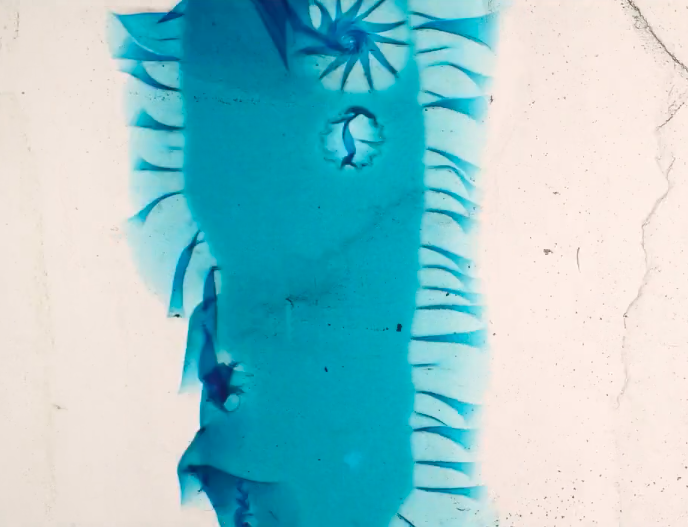
Água Forte Mónica Baptista, 2018
Água Forte is a film made on a trip to the Amazon that seeks to preserve a series of encounters. In the beginning, we listen to the myth of the Creation of Corripaco, an indigenous people of the Amazon (Brazil, Colombia and Peru), where the first God, who lives in a vertical and silent world, sees his excrement emerge from the deep waters. Água Forte follows the course of the river, intersecting different temporalities: the mythological and the essay, of the travel journals, thus composing a horizontal reflection, like a landscape, and finally collapsing into an object born of the unconscious.
Água Forte is a film made on a trip to the Amazon that seeks to preserve a series of encounters. In the beginning, we listen to the myth of the Creation of Corripaco, an indigenous people of the Amazon (Brazil, Colombia and Peru), where the first God, who lives in a vertical and silent world, sees his excrement emerge from the deep waters. Água Forte follows the course of the river, intersecting different temporalities: the mythological and the essay, of the travel journals, thus composing a horizontal reflection, like a landscape, and finally collapsing into an object born of the unconscious.
Screening curated by Margarida Mendes
Analysing the ocean as a social space where technologies for scientific knowledge production and resource exploitation are developed, this session questions the ways in which we are connected with the aquatic milieu through different perspectives and tools. Oceanarium, by Armin Linke developed in collaboration with Giulia Bruno and Giuseppe Ielasi, was entirely filmed in the backstage of Lisbon’s Oceanarium. The film discloses the everyday rituals that sustain this massive infrastructure - where different ecosystems of ocean space are rebuilt - by carefully introducing dissected shots, where one can access maintenance practices omitted behind the glass of the aquarium. In his work, Linke reports the spaces and systems of management and negotiation in the anthropocene era, documenting the performance of bureaucracy and our complex relation with nature, that is, here, theatricalized This session also comprises videos by inhabitants online collective channel for exploratory video and documentary reporting. Since 2018,inhabitants have been producing, in alliance with Margarida Mendes, the webserie “What is Deep Sea Mining?”, that is under debate to occur in the vicinities of the Azores archipelago. In the first three episodes of the webseries hereby presented, that include interviews with biologists on dee sea ecology, one can submerge in an interscalare reading of the different spaces of the water column, and how oceanographic tools have shaped our perception of ocean space throughout the years.
- Margarida Mendes
Margarida Mendes research explores the overlap between infrastructure, ecology experimental film, and sound practices, investigating environmental transformations and their impact on societal structures and cultural production. She is interested in explorin alternative modes of education and political resilience through her curatorial practice an activism. She was part of the curatorial team of the 11th Gwangju Biennale "The 8th Climate (What Does Art Do?)", 4th Istanbul Design Biennial "A School of Schools", and 11t Liverpool Biennale "The Stomach and the Port". In 2019 she launched the exhibition series Plant Revolution! which explores different narratives of technological mediation of the interspecies encounter, and in 2016 she curated Matter Fictions, publishing a joint reade with Sternberg Press. She is consultant for environmental NGOs working on marine policy and deep sea mining and has directed several educational platforms, such as escuelita, an informal school at Centro de Arte Dos de Mayo - CA2M, Madrid; The Barber Shop projec space in Lisbon dedicated to transdisciplinar research; and the ecological inquiry curatorial research platform The World In Which We Occur/Matter in Flux. She is a PhD candidate a the Centre for Research Architecture, Goldsmiths University of London and a frequent collaborator of the online channel for exploratory video and documentary reporting Inhabitants-tv.org
Margarida Mendes is founding member of the movement Oceano Livre.
For more info on deep sea mining visit: www.oceanolivre.org
Analysing the ocean as a social space where technologies for scientific knowledge production and resource exploitation are developed, this session questions the ways in which we are connected with the aquatic milieu through different perspectives and tools. Oceanarium, by Armin Linke developed in collaboration with Giulia Bruno and Giuseppe Ielasi, was entirely filmed in the backstage of Lisbon’s Oceanarium. The film discloses the everyday rituals that sustain this massive infrastructure - where different ecosystems of ocean space are rebuilt - by carefully introducing dissected shots, where one can access maintenance practices omitted behind the glass of the aquarium. In his work, Linke reports the spaces and systems of management and negotiation in the anthropocene era, documenting the performance of bureaucracy and our complex relation with nature, that is, here, theatricalized This session also comprises videos by inhabitants online collective channel for exploratory video and documentary reporting. Since 2018,inhabitants have been producing, in alliance with Margarida Mendes, the webserie “What is Deep Sea Mining?”, that is under debate to occur in the vicinities of the Azores archipelago. In the first three episodes of the webseries hereby presented, that include interviews with biologists on dee sea ecology, one can submerge in an interscalare reading of the different spaces of the water column, and how oceanographic tools have shaped our perception of ocean space throughout the years.
- Margarida Mendes
Margarida Mendes research explores the overlap between infrastructure, ecology experimental film, and sound practices, investigating environmental transformations and their impact on societal structures and cultural production. She is interested in explorin alternative modes of education and political resilience through her curatorial practice an activism. She was part of the curatorial team of the 11th Gwangju Biennale "The 8th Climate (What Does Art Do?)", 4th Istanbul Design Biennial "A School of Schools", and 11t Liverpool Biennale "The Stomach and the Port". In 2019 she launched the exhibition series Plant Revolution! which explores different narratives of technological mediation of the interspecies encounter, and in 2016 she curated Matter Fictions, publishing a joint reade with Sternberg Press. She is consultant for environmental NGOs working on marine policy and deep sea mining and has directed several educational platforms, such as escuelita, an informal school at Centro de Arte Dos de Mayo - CA2M, Madrid; The Barber Shop projec space in Lisbon dedicated to transdisciplinar research; and the ecological inquiry curatorial research platform The World In Which We Occur/Matter in Flux. She is a PhD candidate a the Centre for Research Architecture, Goldsmiths University of London and a frequent collaborator of the online channel for exploratory video and documentary reporting Inhabitants-tv.org
Margarida Mendes is founding member of the movement Oceano Livre.
For more info on deep sea mining visit: www.oceanolivre.org
What Is Deep Sea Minning? Episode 1: Tools For Ocean Literacy, by Inhabitants with Margarida Mendes;
What Is Deep Sea Minning? Episode 2: Deep Frontiers, by Inhabitants with Margarida Mendes;
What Is Deep Sea Minning? Episode 3: The Aazores Case, by
Inhabitants with Margarida Mendes;
Oceanarium, by Armin Linke in colaboration with Giulia Bruno and Giuseppe Ielasi
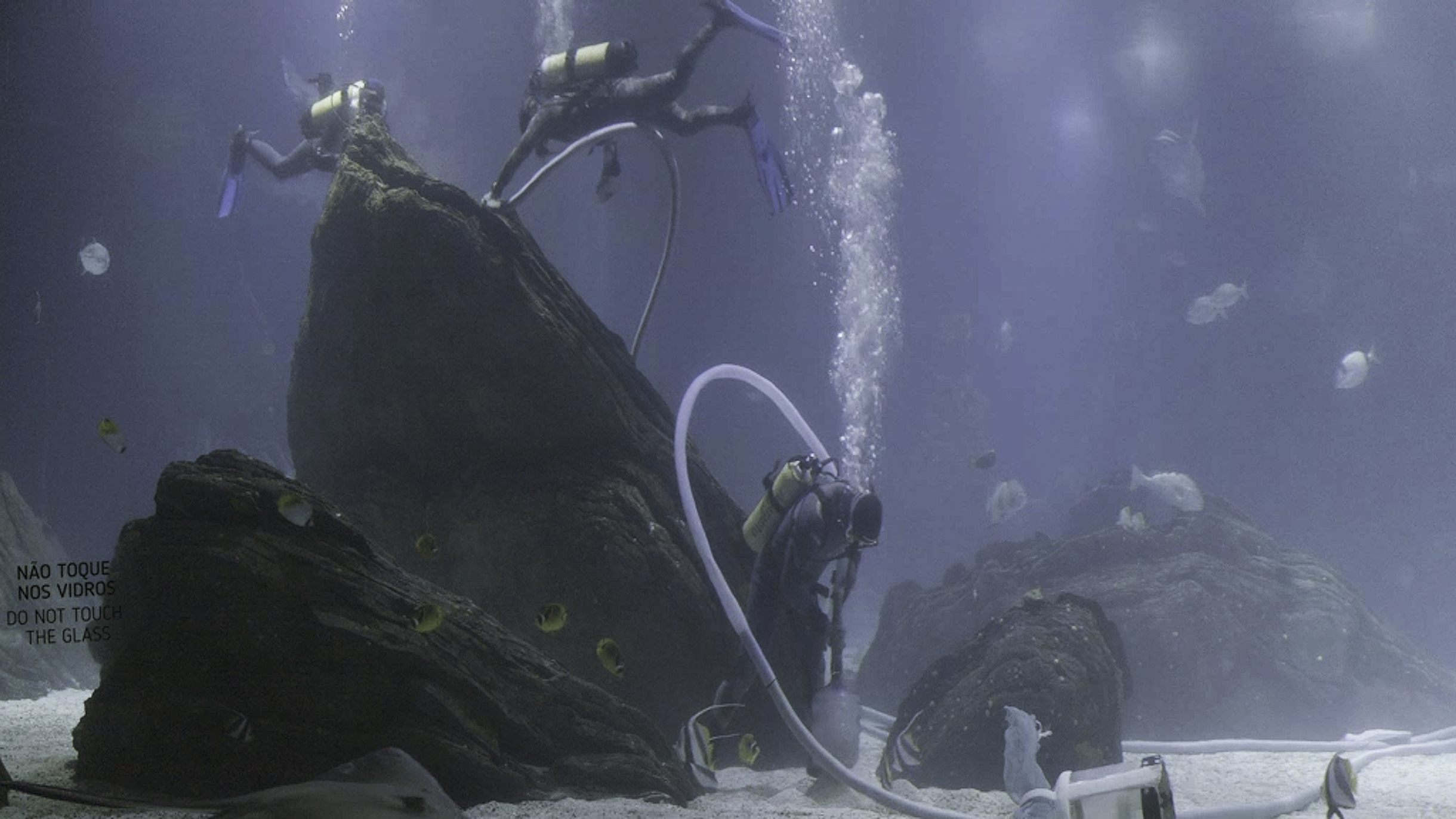
*Oceanirium was commissioned by MAAT and EDP Foundation, in association with the Oceanári de Lisboa, for the exhbition Aquaria, curated by Angela Rui. It is on view as a one-nigh ephemeral installation, set outdoors in Pico island during Miragem program.
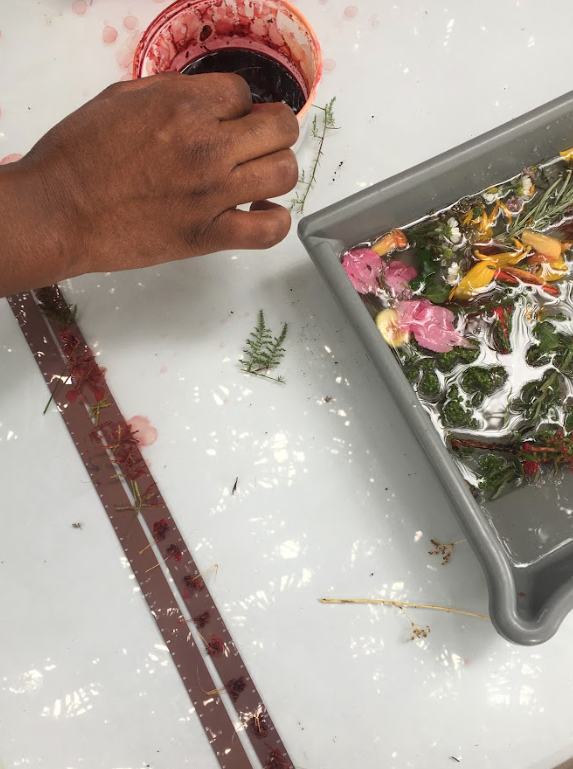
Workshop #1
How To Print The Landscape? Creative Workshop Of Animist Cinema with Mónica Baptista
During two afternoons, participants of this creative workshop will collect plant and mineral material (flowers, leaves, dirt, stones, seawater, etc.), elements that will then be used for direct printing in 16mm film. Other animation techniques such as scratching and drawing directly on the film as well as natural pigment dyes will also be explored. The workshop will make use of environment friendly ecological and biodegradable chemicals. All necessary materials will be provided by us and there is no need for previous training or experience in the area of cinema. The event will take place in Mata dos Dragoeiros, in the island of Pico, on the afternoons of 26th and 27th of August, inserted in the general program of Miragem - International Film Screening in the Landscape. As a final result, a collective film will be screened on 29th of August, during the night session of Miragem. During the 26th and 27th of August, between 2pm and 6pm, at Mata dos Dragoeiros, Wine Museum, Pico Island, Azores.
- Age from 16 years and intended for the inhabitants of the region.
- Maximum limit of 10 people enrolled in the workshop.
- For registration, please send email to miragemfilm@gmail.com with a short paragraph with your personal motivation for the creative workshop.
- The workshop is free.
Mónica Baptista (Porto - 1984)
Graduated in Fine Arts-Painting from the Faculty of Fine Arts of Porto, Mónica Baptista develops work in the area of photography, documentary and experimental cinema, with special focus on analog media, super8, 16mm and 35mm. Pitões das Júnias (Trás-os-Montes) has been a gestational place for the development of her work, as well as cyclical travel contexts and the frequency of artistic residences of which stand out, ZDB - Lisbon, Location One - New York, Crater Lab - Barcelona, Atelier 105, Light Cone - Paris and LEC - Experimental Laboratory of Cine in the City of Mexico. Her work has been exhibited in Portugal and internationally, in galleries and film festivals. Her filmography includes Água Forte (2018), Cem Rios t'Abram (co-realization, 2015), Teares (2014), Diário (2010) prize BES Revelation - exhibited in the Museum of Serralves and the documentary Territórios (2009) premiered during the Week of Criticism in Cannes and winner of the best directing at Visions du Réel (Switzerland). She is co-founder of the Cultural Cooperative Laia, a project focused on production and research in the field of experimental cinema.
